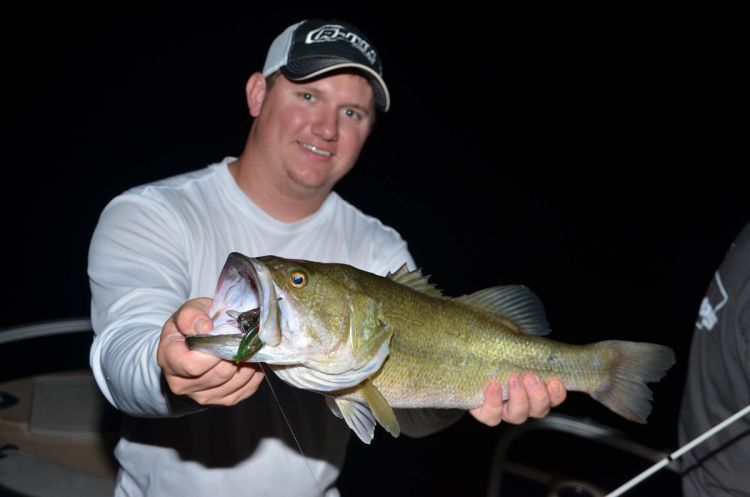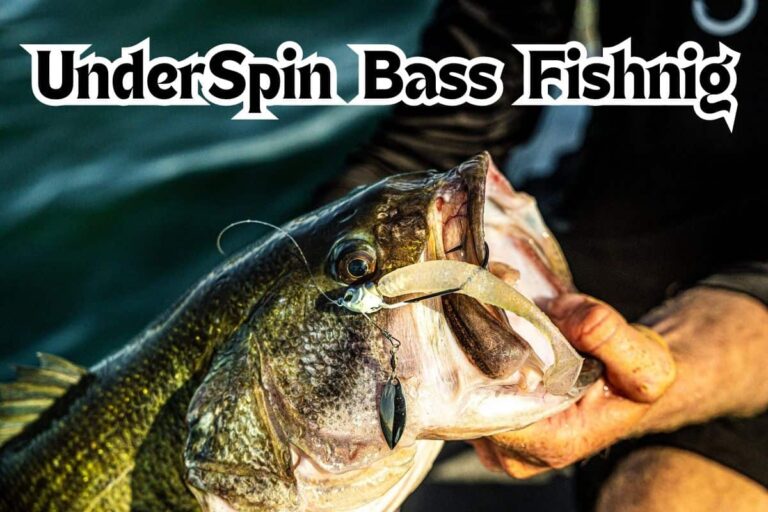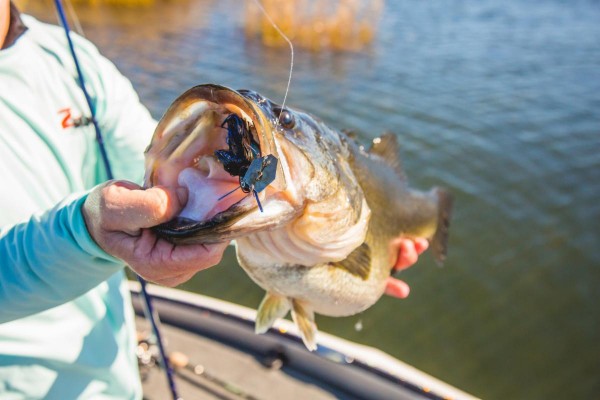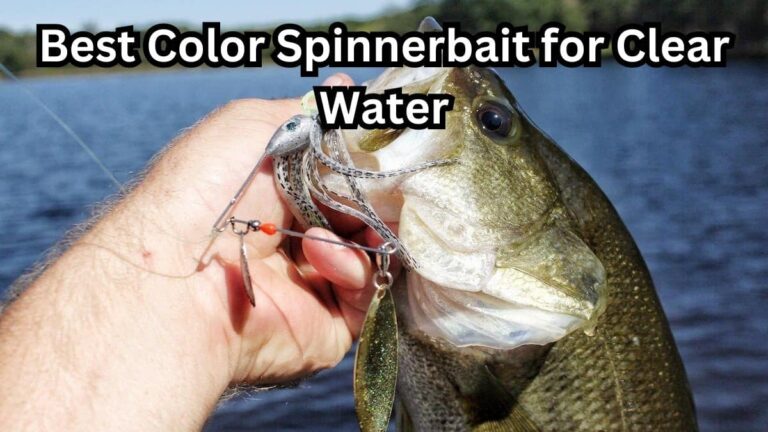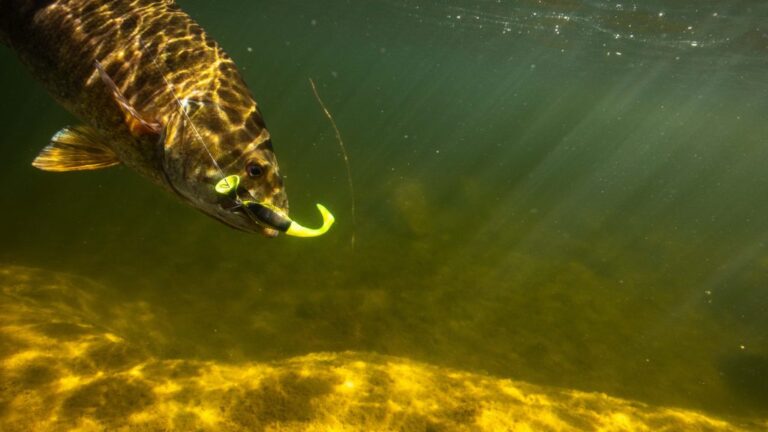Spinnerbaits for Bass Fishing: Guide to Using Bass Spinnerbaits
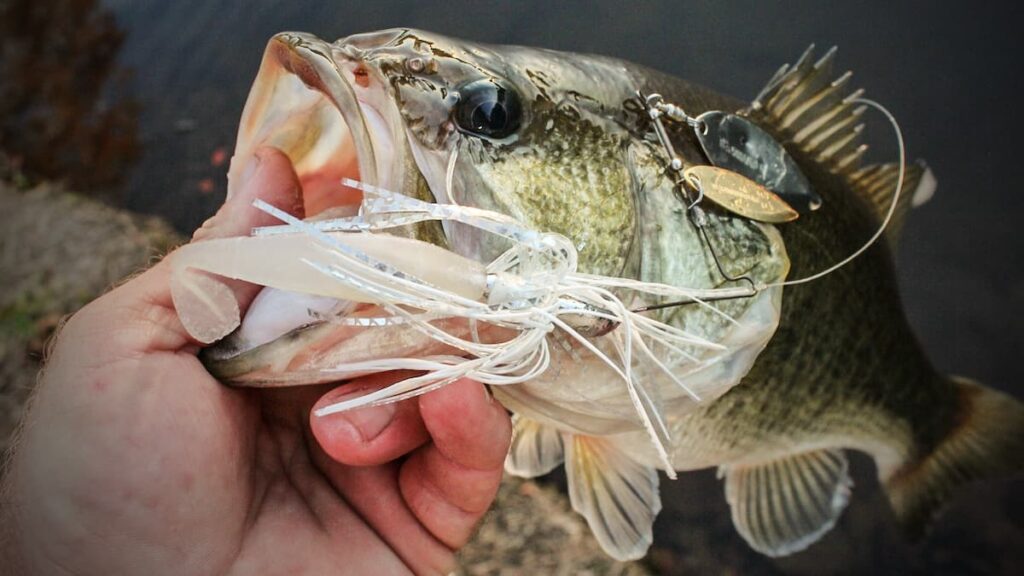
Spinnerbaits are time tested lures that have won countless bass fishing tournements, as well as given lots of kids and weekend anglers a great day on the water.
They might look a bit strange out of the water, but once you get them wet, you can immediately see why bass love them so much.
But with any great lure, you need to know how, when, and where to fish spinnerbaits in order to get the most out of them.
Breakdown of Spinnerbaits
Real quick, let’s break down the design and function of the spinnerbait.
Blades
The blades of a spinnerbait are the shiny, rotating parts that create vibrations and flash underwater.
They come in various shapes, sizes, and colors, each producing a unique effect.
Colorado blades provide a slower, thumping action, while Willow blades offer fast, flashy rotations.
Indiana blades fall in between, providing a balance of vibration and flash.
Skirt
The skirt of a spinnerbait is made of flexible materials like silicone or rubber strands. It imitates the appearance and movement of baitfish or other prey.
Skirts come in a wide range of colors, allowing you to match the natural forage or experiment with contrasting shades to trigger a bass’s predatory instinct.
Hook
Spinnerbaits have a big, single hook. Larger hooks like this require a harder hookset, but they also keep bass on better than smaller hooks or trebles.
Types of Spinnerbaits for Bass
When it comes to spinnerbaits, there are two main types to choose from:
- Single-Bladed Spinnerbaits: Versatile and great for covering water quickly.
- Double-Bladed Spinnerbaits: Provide more flash and vibration, ideal for murky water or low-light conditions.
Each type has its own advantages, so consider factors like water clarity and bass behavior to select the right spinnerbait for your fishing expedition.
Having a variety in your tackle box will increase your chances of success.
Spinnerbait Blades
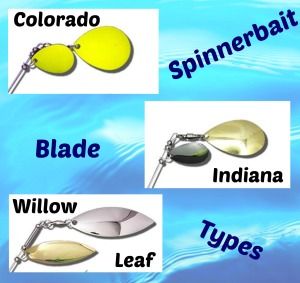
Colorado Blades
Colorado blades have a rounded shape and provide significant water resistance, creating a slower and more thumping action.
They produce strong vibrations that bass can easily detect, making them effective in stained or murky water.
Colorado blades are great for attracting bass in low-light conditions or when you want a slower retrieve speed.
Willow Leaf Blades
Willow blades have a sleek, narrow shape resembling a willow leaf. They offer less water resistance, resulting in a faster and flashier rotation.
Willow blades excel in clear water and produce intense flashes that mimic the quick movements of baitfish.
They are ideal for covering a lot of water and triggering reaction strikes from aggressive bass.
Indiana Blades
Indiana blades fall between Colorado and Willow blades in terms of shape and action.
They have a more rounded shape than Willow blades but are narrower than Colorado blades.
Indiana blades provide a balanced combination of flash and vibration, making them versatile options that can work well in various water conditions.
Choosing the Right Spinnerbait for the Situation
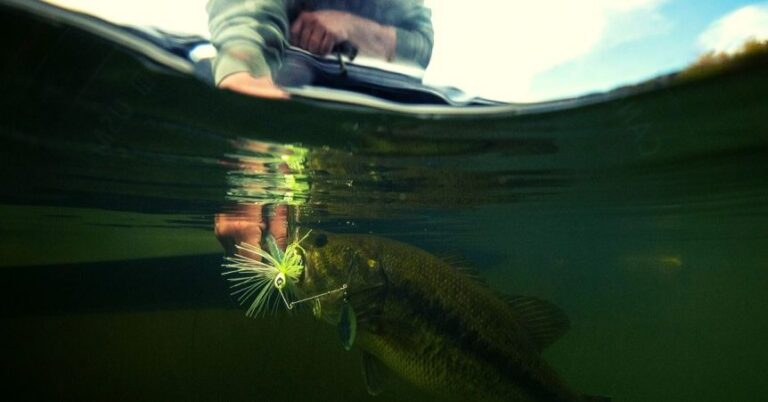
When it comes to bass fishing, choosing the right spinnerbait can make all the difference between a successful day on the water and a frustrating one.
With so many options available, it’s essential to know how to select the perfect spinnerbait for your fishing conditions.
Clear Water
When fishing clear water, you don’t need as much flash or vibration because bass can already see your lure very easily.
Willow leaf spinnerbaits are best for clear water because they can be fished very fast.
In high water clarity, you don’t want to let bass get a great look at this lure. So being able to fish it fast is important.
Also Read: Best Color Spinnerbait for Clear Water
Muddy Water
In muddy water, you need extra vibration, more flash, and a slower retrieve. This is exactly what a Colorado blade spinnerbait gives you.
The wide blades give off tons of vibration and resistance, allowing you to retrieve it slowly.
Since the water is muddy, bass won’t get a good look at the bait anyway, so you need to give them time to find it rather than not letting them get a good look at it.
Why Spinnerbaits are So Effective
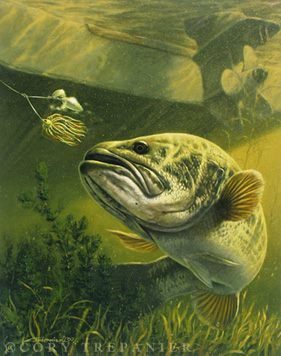
First off, spinnerbaits are incredibly versatile. No matter the fishing conditions, spinnerbaits can handle it like pros.
Whether you’re fishing in clear water, murky depths, or around structures, spinnerbaits have got your back.
They adapt to different depths and structures with ease, making them a go-to choice for bass enthusiasts.
Now, here’s the secret sauce: spinnerbaits have a knack for attracting bass like nothing else.
They bring the bling to the underwater party with their flashy blades and irresistible vibrations.
Picture this: a shiny blade spinning and creating flashes that mimic the movements of tasty prey.
It’s like ringing the dinner bell for bass! These lures tap into a bass’s predatory instincts, triggering strikes without hesitation.
Tips for Using Spinnerbaits Effectively
Alright, fellow anglers, it’s time to unlock the secrets of using spinnerbaits like seasoned pros.
These techniques and tips will help you maximize your chances of landing that trophy bass.
Retrieve Techniques
There are a few tried-and-true retrieve techniques that work wonders with spinnerbaits.
The steady retrieve is a classic method where you maintain a consistent speed, allowing the blades to spin and create vibrations.
The stop-and-go retrieve involves intermittent pauses, imitating the movements of injured prey.
Lastly, the slow-rolling retrieve involves a slower presentation, allowing the bass more time to strike.
Targeting Bass Hiding Spots
Bass love to hide in specific spots, and you can use spinnerbaits to lure them out.
Weedy areas and vegetation are prime targets, as the spinnerbait can navigate through them, imitating a baitfish darting in and out.
Look for underwater structures and cover like fallen trees or rock formations where bass might seek shelter.
Drop-offs and points are also excellent spots, as bass often hang out there to ambush their prey.
Seasonal Considerations
Bass behavior changes with the seasons, and your approach with spinnerbaits should adapt accordingly.
In spring, bass are often in shallow water and more aggressive, so faster retrieves and flashy spinnerbaits can be effective.
During summer, when bass tend to go deeper, slow-rolling spinnerbaits along drop-offs or using deeper-diving models can entice strikes.
In fall and winter, bass become less active, so a slow and subtle presentation near cover can do the trick.
Spinnerbait Modifications and Trailers
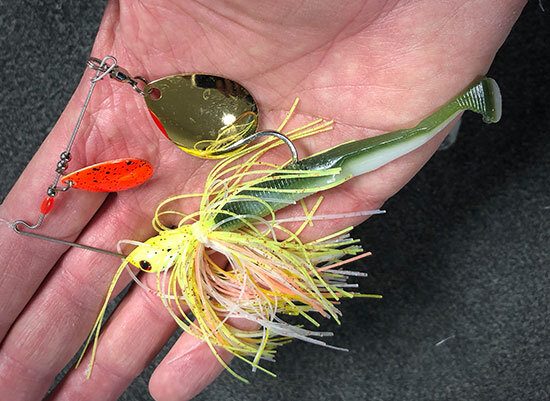
Blade Configurations
Mixing blade types, such as a Colorado blade followed by a Willow blade, can create a unique action and increase the bait’s flash and vibration.
Play around with blade sizes too, as larger blades produce more thump while smaller blades offer a finesse approach.
Adding Trailers
Trailers are additional attractants that you can attach to the spinnerbait to increase its appeal.
Soft plastic trailers, like curly-tail grubs, flukes, or swimbaits, add extra action and mimic the movement of baitfish.
Reeling this In
So there you have it, my fellow anglers! We’ve come to the end of our spinnerbait journey for bass fishing.
Armed with knowledge about spinnerbait types, techniques, customization, and choosing the right bait, you’re ready to tackle those bass like a pro.
Now it’s time to hit the water, try out your newfound skills, and create amazing fishing memories.
So grab your gear, get out there, and may your spinnerbaits bring you endless success and thrilling catches.

